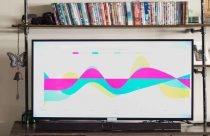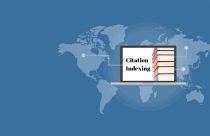Clarivate Analytics Releases 2019 Journal Citation Reports

Identifying reputable journals is essential for researchers. Research publishing is an important part of any researcher’s career. Therefore, tracking which journals are impactful in different fields can be helpful in boosting the power of your own work. There are multiple organizations that publish reports on the quality and impact of academic journals. The annual Journal Citation Report published by Clarivate Analytics is one such report. Clarivate Analytics has recently released the 2019 edition of its Journal Citation Reports. The report contains valuable information and indicators to help researchers evaluate journal quality and decide where to publish.
2019 Journal Citation Report: Key Highlights
The 2019 Journal Citation Report was put forth by the Web of Science Group, which is part of Clarivate Analytics. Clarivate Analytics has published the Journal Citation Report annually since 1973, refining and updating its methodology and which journals are included to provide researchers with the information they need.
Key highlights from the 2019 report include:
- 11,877 journals listed;
- 81 countries represented;
- 283 new journals,108 of which are fully open access;
- 236 disciplines;
- 64% of the journals covered represent an increase in Journal Impact Factor;
- An increase in the aggregate Journal Impact Factor in 90% of the 236 research categories;
- 17 journals were removed to maintain the integrity of the reports (for self-citation and citation stacking); and
- 3 million articles, reviews, editorials, and other source items.
Another key highlight is the addition of three new categories. These categories are Quantum Science & Technology (SCIE), Development Studies (SSCI), and Regional & Urban Planning (SSCI). The 17 journals, removed for self-citation and citation stacking, represent just 0.14% of the total journals listed. In 2018, 20 journals were delisted for the same reasons. The publishers of the report noted that they aim to ensure that the report continues to reflect the evolving nature of research and maintain quality control overall.
The 2019 Journal Citation Report Gets a Redesign
The new additions to the 2019 report aren’t just limited to journals and categories. The report itself builds upon innovations introduced in the 2018 Journal Citation Report. The Journal Citation Reports are the source of the journal Impact Factor (IF), which is one of the most widely-used metrics to measure journal quality. The 2018 Journal Citation Report redesigned the Journal Profile Pages to promote greater transparency in the calculation of IF. They also made it easier to understand the content, institutions, and regions that were most influential. In the 2019 report, each Journal Profile Page now also includes:
- Graphics to show a journal’s percentile rank in a category over each year;
- Cited and citing journal data with a metrics trend graph and an indicator summary;
- Enhanced Article Match Retrieval so publishers can link directly to the Journal Profile Page on their website(s); and
- A breakdown of the journal’s uncited items per article and review.
By including this information, the 2019 Journal Citation Report hopes to provide a clearer picture of each journal’s overall performance. Such a picture can also offer researchers more in-depth data about where a journal fits in to the overall field and category compared to others. Keith Collier, Managing Director Publisher Services at the Web of Science Group, emphasized the importance of the report, stating: “Each year, millions of scholarly articles are published containing tens of millions of citations. Each citation is a meaningful connection between two pieces of research, showing how research connects.”
Using Journal Reports and Rankings as a Researcher
The Journal Citation Reports can be a helpful tool to both new and experienced researchers, both trying to understand the landscape of academic publishing. The rankings they provide for each journal and the accompanying variety of metrics allow you to evaluate the quality and relevance of each journal. This is essential information to anyone deciding where to submit articles for publishing.
This is particularly true with thousands of journals and millions of articles published every year. It is indeed a challenge to know which journals will help your career and which may threaten it. Resources like the Journal Citation Reports can be useful for ensuring you avoid falling victim to a predatory journal. The addition of 108 open access journals in the 2019 report is also noteworthy, as the debate continues over whether open access journals can compete with subscription models in terms of content and quality.
Alternative Sources for Journal Rankings
Just as in ordinary research, it is important not to rely too heavily on any one source when assessing the quality and impact of journals. There are limits to any metric, and the Journal Impact Factor has endured criticism for being biased against non-Western sources in particular. It has also been criticized for its lack of depth when it comes to truly evaluating citation distribution. This is one reason the Journal Citation Report is continually updating the indicators it provides. Clarivate Analytics aims to counterbalance some of the more enduring problems that have been uncovered by researchers investigating the Journal Impact Factor. There is also the issue of paywalls, and some reports, including the Journal Citation Reports, still require institutional subscriptions.
Despite these issues, publications like the Journal Citation Report remain influential and important. However, some alternatives have begun to emerge. Eigenfactor is a free, searchable database of journals. The site uniquely reports journal subscription prices as well as citation influence, discussing openly the issue of value and cost-effectiveness. SCImago provides journal and country ranks, adding another dimension for researchers to evaluate. No matter which source you rely on, it is always important to ensure that you thoroughly understand where a journal ranks before you submit your valuable research for publication.
How do you evaluate journal quality and ranking? Are there factors that you think the Journal Citation Reports should include or remove? Let us know your thoughts in the comments below.









